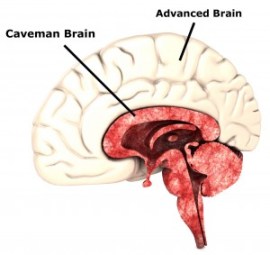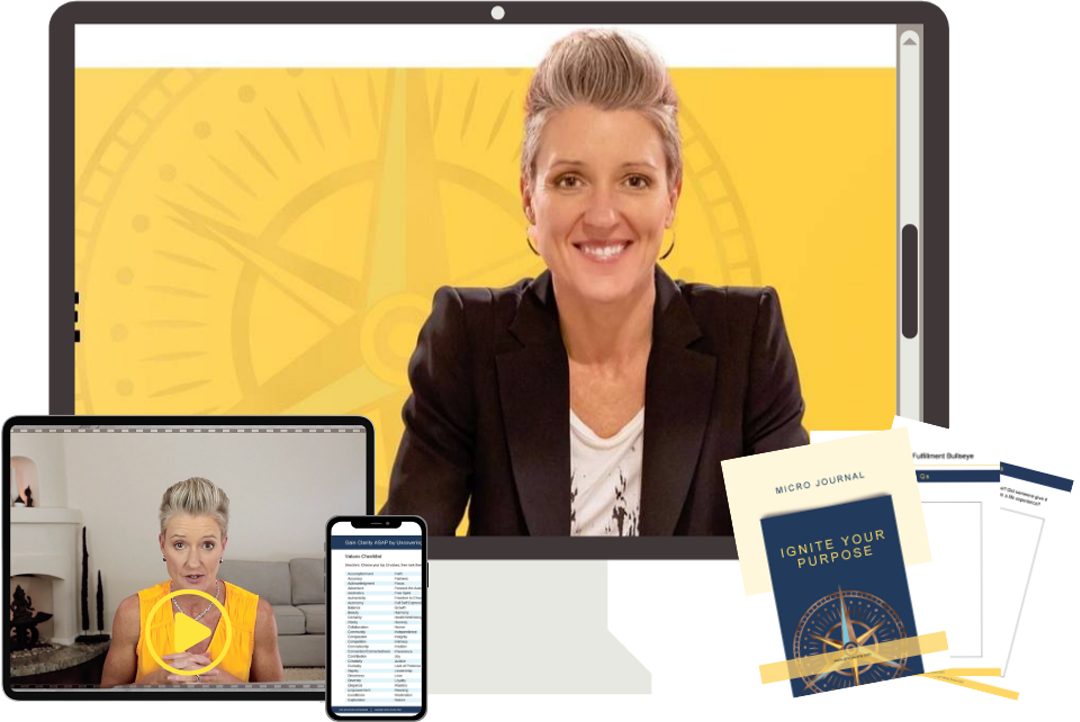The Secret to Making Change? Your Inner Caveman
Oct 11, 2012Why do we vow at 8:30 AM not to eat any more sweets, yet at 3:30 PM we’ve got our hands in a co-worker’s candy stash?
Why do we sign up for a gym membership we rarely ever use?
Why do we say we’re going to remain calm and rational during an intense meeting, but twenty minutes into it we’re red-faced and shouting?
I know why.
 You have a caveman brain.
You have a caveman brain.
No really...you do. That’s not a personal insult. There are 3 major parts to our brains, two of which are more primitive and responsible for breathing, heart rate, fight or flight, survival and emotion (what I call your caveman brain). The other portion is more recent and controls higher functions of thought and reasoning in accordance with internal goals (your advanced brain).
When we experience (or create) too much change it results in stress and our caveman brain hijacks our advanced brain. The caveman brain takes charge and wants to keep us safe, feed us, and make us happy. Your caveman brain wants to know why anyone would EVER eat less and go to a gym with bright lights, loud music and unfamiliar equipment in order to expend excess energy. To the caveman brain, these things are a threat! Threats are a stress requiring defensive action – fight or flight – that mean bailing on a gym membership, flaking out on a meal plan or “forgetting” to plan a healthy dinner.
A great strategy for behavioral change is to sneak up on your caveman brain. You’ve got to slip past it without waking it up, which means the behavioral change needs to be small, doable and nonthreatening. You’ve got to make it so easy a caveman could do it!
Here are 4 critical steps for successful behavior change:
1. Identify ONE simple, clear, practical and very small action step.
2. How confident are you that you can do this task every day? Make sure it is at least a “9” on a scale of 1-10. If your confidence is less than 9 or 10 make the task simpler and easier.
3. Put it on your calendar. Plan the exact time and place you will perform the new action.
4. After doing the action step, log it and write how you feel afterward. Identifying your positive feelings recruits the emotional caveman brain and gets it on board with the program!
For instance instead of saying “Tomorrow I’m going on a diet and eating only healthy foods” - which gets your caveman brain all riled up because it’s designed to keep you alive by eating high fat, high sugar foods - you could say “I’m going to eat 4 one-cup servings of fruit or vegetable each day.” If 4 one-cup servings are too many for you, start with what you KNOW you could accomplish. Plan on eating 1 one-cup serving at each of your three major meals and one as an afternoon snack. After eating each serving of fruit or vegetable, log it and write about how it makes you feel. “I’m proud of following through with my action step right now. I’m on the road to taking better care of myself and the journey is made of many small steps. One of which I just took.”
What's one simple, clear, small step you can take to improve resiliency, performance and health?
Coming up in the next post: how you can keep using your Caveman Brain to make change automatic and easy.


